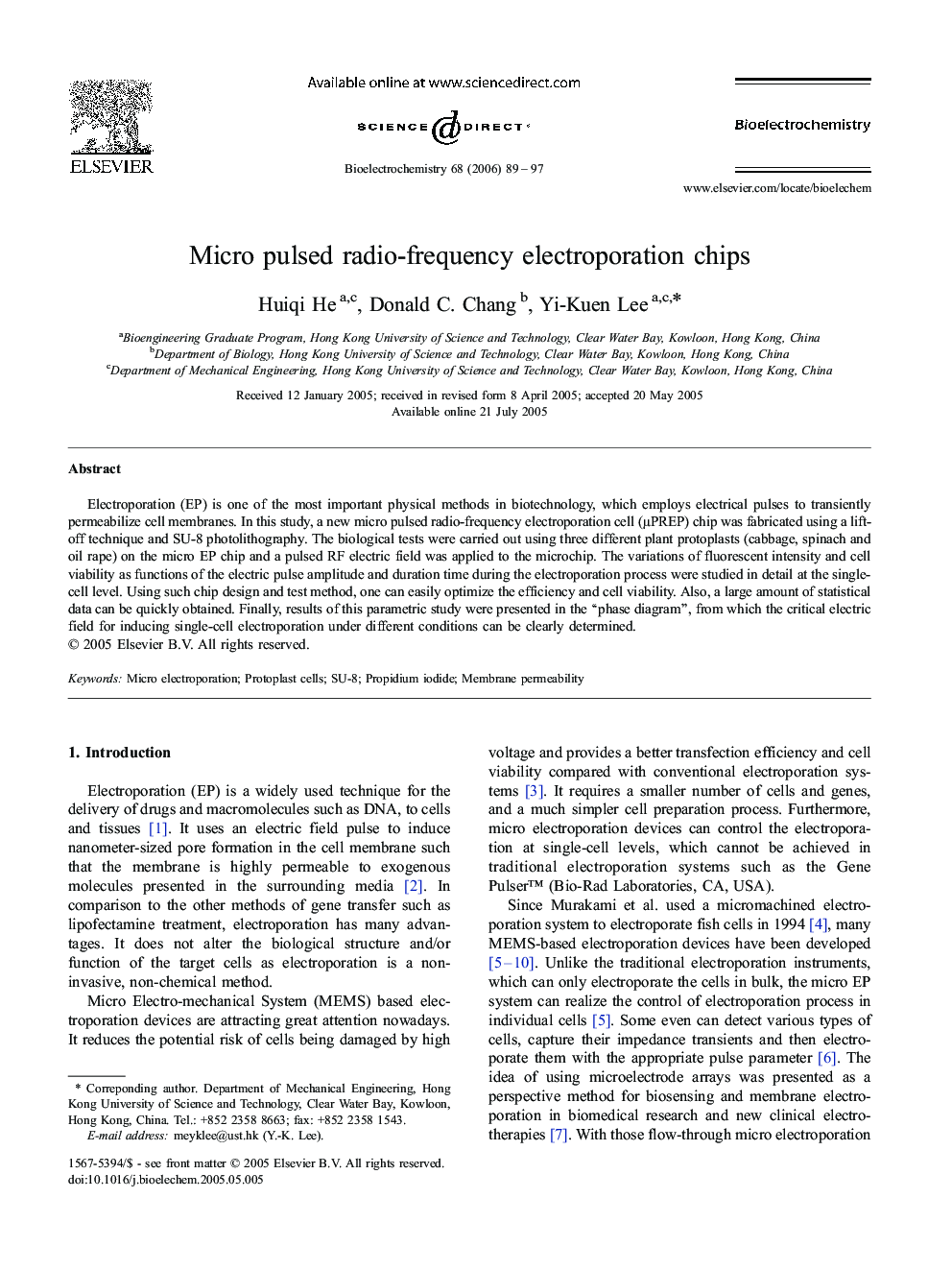| Article ID | Journal | Published Year | Pages | File Type |
|---|---|---|---|---|
| 1272758 | Bioelectrochemistry | 2006 | 9 Pages |
Electroporation (EP) is one of the most important physical methods in biotechnology, which employs electrical pulses to transiently permeabilize cell membranes. In this study, a new micro pulsed radio-frequency electroporation cell (μPREP) chip was fabricated using a lift-off technique and SU-8 photolithography. The biological tests were carried out using three different plant protoplasts (cabbage, spinach and oil rape) on the micro EP chip and a pulsed RF electric field was applied to the microchip. The variations of fluorescent intensity and cell viability as functions of the electric pulse amplitude and duration time during the electroporation process were studied in detail at the single-cell level. Using such chip design and test method, one can easily optimize the efficiency and cell viability. Also, a large amount of statistical data can be quickly obtained. Finally, results of this parametric study were presented in the “phase diagram”, from which the critical electric field for inducing single-cell electroporation under different conditions can be clearly determined.
